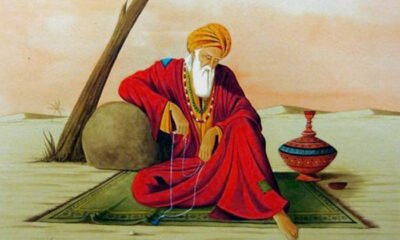A folk-singer from Sindh, once said that ‘folk songs’ are the true essence of the soil of the place where it came in existence and the true manifestation of feelings, taste and passion of the people of the area. Thus, you can argue that Balti folk-songs are the natural essence of Baltistan They are free of any artificial addiction or composition. They are melodious to hear, meaningful in their depth and deeply alluring. Balti folk songs reveal experiences, observations, feelings and the passion of people in simple words that are easily understood. They are also a manifestation of the most simple and honest living culture of the area and include human wisdom, romantic feelings, historical events, literary masterpieces, eulogies, satire, idioms and proverbs etc.
Amo-Dalmo Ju, is one such song in which the incomparable and exemplary love of a mother for her children has been described in a poetic conversation between a mother ibex and her teenage kid. Amo Dalmo ju refers to a mother ibex. This heart-wrenching song is part of the vast treasury of ancient Balti folk-literature. It is an allegory of a mother’s love for her children. It is a beautiful narration of how even at the risk of losing her own life, a mother tries her best to ensure that her kid is not scared of the dangers around them. The mother also does not hesitate in giving up her own life to save her kid.
The song
A mother ibex and her kid were grazing peacefully in some mountain pastures. A hunter reaches the valley in search of some game. He spots the mother ibex and her kid from a distance and stealthily approaches them. As he crossed a ridge, the tinny kids spotted him. It was an alarming sight for the kid and he turns quizzically towards his mother. She too had seen the hunter and realized the dire consequences that awaited them. She was sure that it was hunter and that he carried a death warrant for her. She could easily run away and save herself , but how could she leave her kid at the mercy of death. So she accepted her fate and remained with her kid. She was finally shot and killed. The folk song includes the following dialogue between the mother ibex and her kid.
When the goat kid spotted the hunter approaching them with a gun, he became suspicious and asked his mother:
“Mother ! O mother ! Who is that man following us on the ridge ? A hunter ?”
The mother ibex did not want to scare her kid. She answered:
“My son….oh… that one…do not worry, that is a shepherd looking for his cattle .”
The son responded with another question:
“Mother ! if that is the case….why he is carrying a gun in his hand?”
The mother ibex answered:
“My dear that is a long stick. All shepherds carry it to protect themselves from wild animals”.
The kid was still curious and asked:
“Mother ! look ! He has a gunpowder pouch tied to his waist-belt?”
The mother replied:
“Darling ! every shepherd carries his lunch tucked in their waist. It is not gun-powder.”
By this time the hunter had reached close to them and fired two bullets in rapid succession and the mountain shuddered with sound.
The kid became very frightened and asked:
“Mother ! O …mother ! What is this sound. I think that was gun-fire. I am very scared….mother !”
The mother ibex was keenly aware of the impending danger, but calmed her son. She said:
“No my dear. It is not firing, I swear ! It was the echo of thunder from the clouds in the sky.”
The bullets had hit the mother in her skull and flank. Blood started to ooze from her wounds. The kid saw the blood and anxiously asked his mother:
“I see blood oozing from your head and belly. What is wrong with you?”
The mother replied:
“My love! I had rubbed my head and sides against the rock, which had scraped my body.”
She knew that she had been hit by bullets and that the hunter would be approaching her soon. She started to tremble and stagger due to pain , fear of her impending death and the possible fate of her kid.
The kid noticed it and grew worried and asked his mother:
“Mother !….mother ! Why are you staggering ?”
The mother continued to calm her son:
“Do not worry dear ! Perhaps I ate some poisonous grass, which is making me dizzy. I will be alright soon.”
The mother saw the hunter approaching them and recognized that her death was close. Just then, the kid started to suckle her nipples. The mother was in great despair and agony. She could no longer stand and collapsed on the ground.
She spoke urgently to her son:
“My son !….go……run away……the hunter is here…I leave you to the mercy of God….run.” The kid was shocked, jumped and started to run away. After a little while he stopped to check if his mother was following him. He saw the hunter cutting her throat vehemently, her blood was flooding out and her legs fluttering in the tight grip of the hunter. It was a horrible sight and he with all his might, ran away in to the wilderness.




 Tourism2 years ago
Tourism2 years ago
 Arts, Culture & Heritage2 years ago
Arts, Culture & Heritage2 years ago
 Tourism2 years ago
Tourism2 years ago
 KIU Corner2 years ago
KIU Corner2 years ago
 Current Affairs2 years ago
Current Affairs2 years ago
 Arts, Culture & Heritage2 years ago
Arts, Culture & Heritage2 years ago
 KIU Corner2 years ago
KIU Corner2 years ago
 Opinion2 years ago
Opinion2 years ago

















